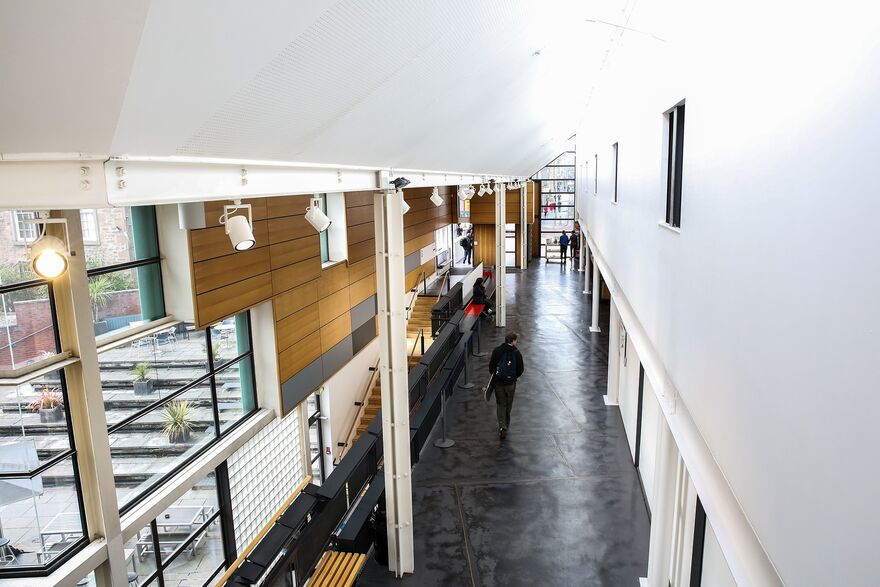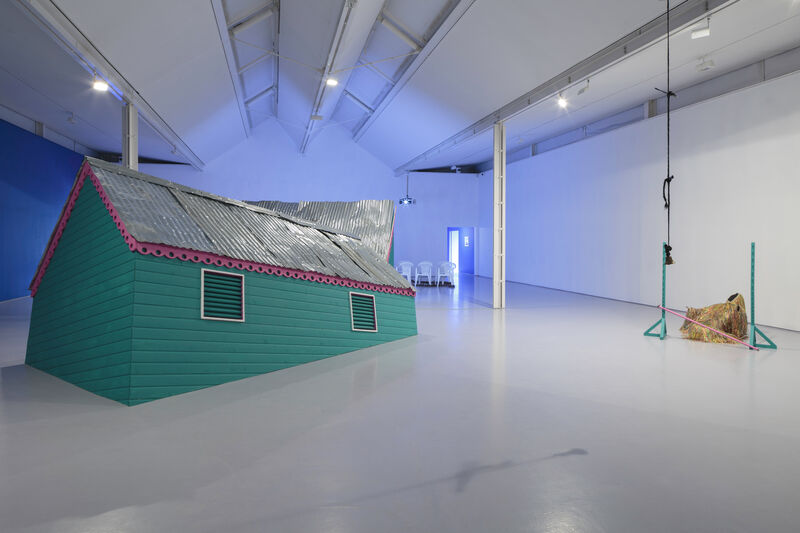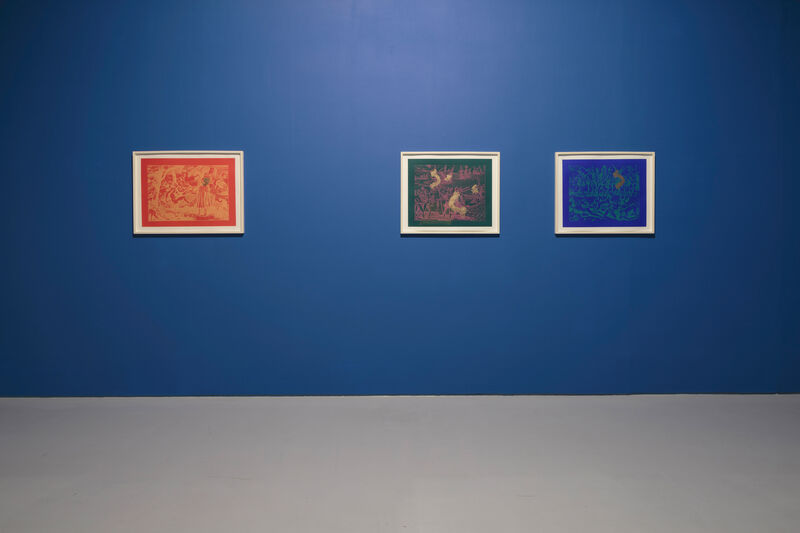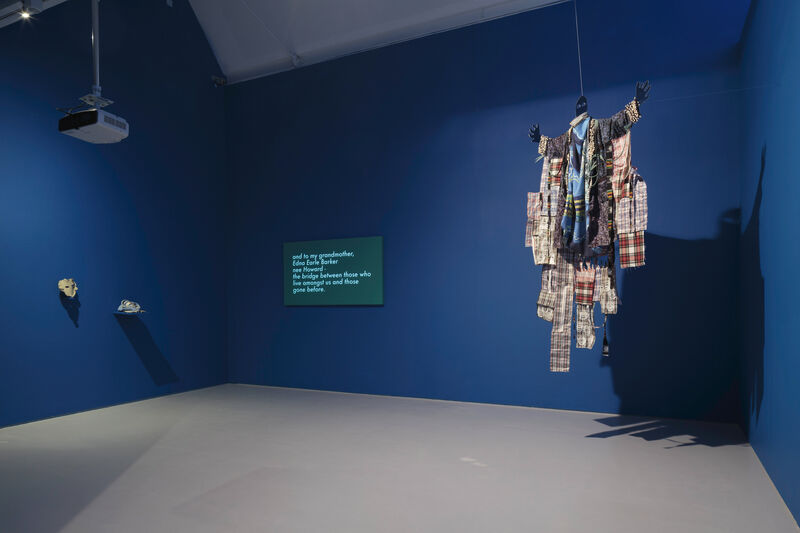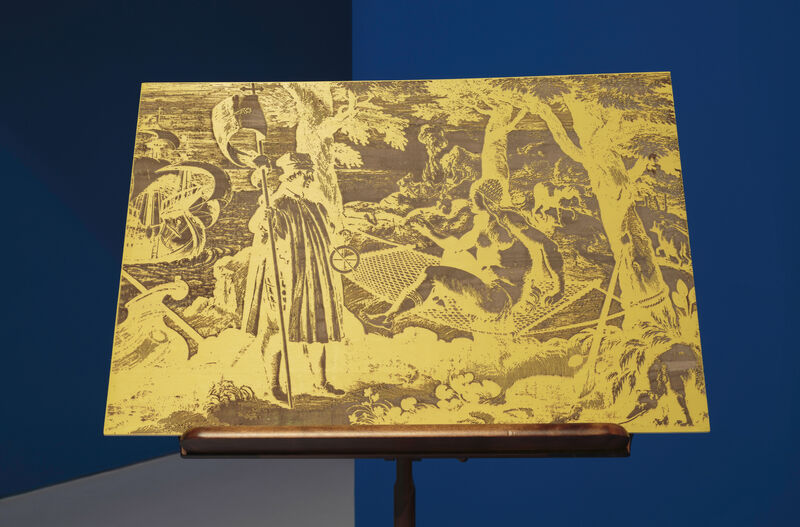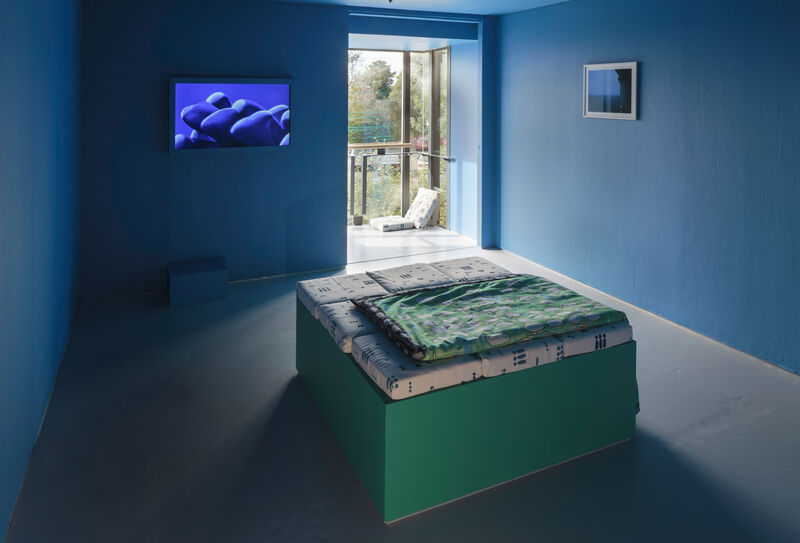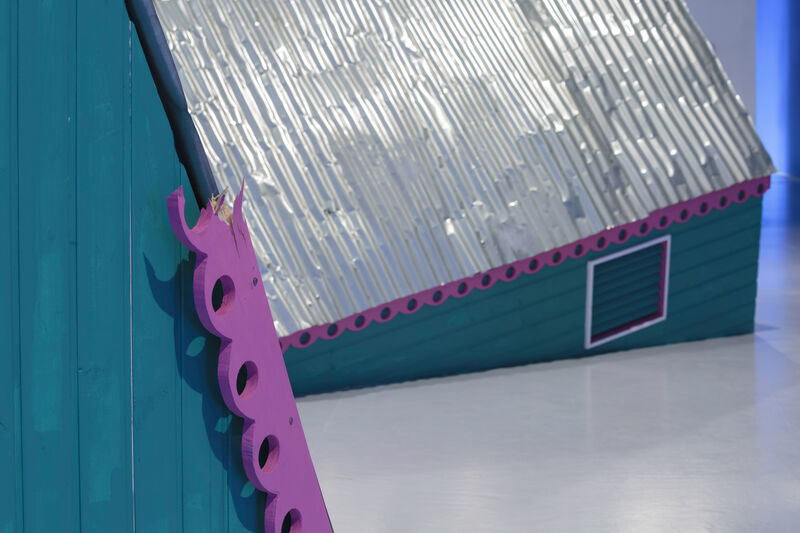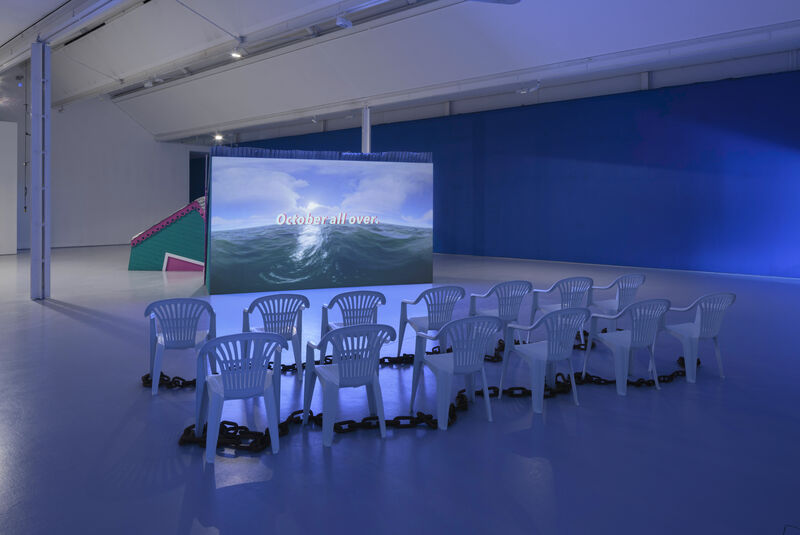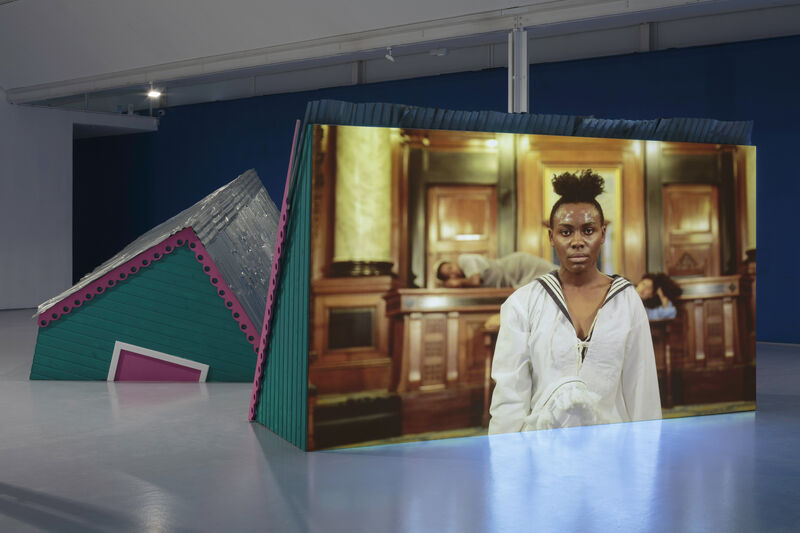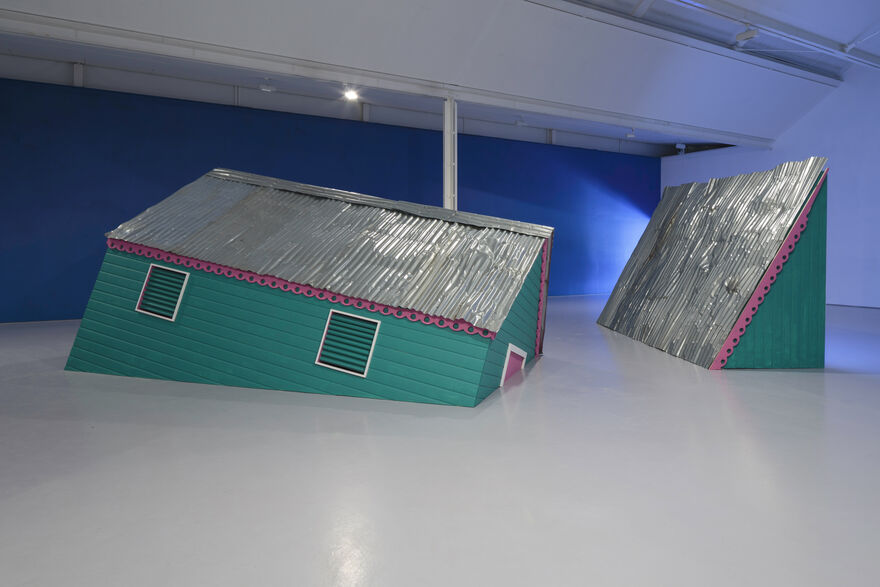
Alberta Whittle
How Flexible Can We Make the Mouth
14 September - 24 November 2019
This exhibition marked Barbadian-Scottish artist Alberta Whittle’s first major solo exhibition in a UK institution, drawing together new and recent artworks in film, sculpture, print, installation and performance to reflect on memory, trauma, weather and tensions between the land and sea.

Whittle’s interdisciplinary practice aims to develop a visual, oral and textual language that questions accepted Western constructs of history and society. This work is undertaken with an acute understanding of how formal historical records produced by privileged white men have always sought to replace more ancient and informal ways of comprehending the past. The artist’s wider research questions the authority of postcolonial power, its implications and its legacy.
Whittle’s work often considers conditions in the afterlife of slavery where the racialised black body can become suspended in a state of stress that directly impacts upon physical, mental and emotional health. Within her work, the artist connects these ideas of black oppression with meditations on survival; championing the idea of healing as self-liberation.
How Flexible Can We Make the Mouth refers to Whittle’s current preoccupation with healing, writing, breath and orality. Writing has always been an integral part of her practice and the texts she produces are meant to be read aloud, to be heard as well as seen. She also works rhythmically in relation to writing and reading, particularly looking at punctuation marks as visual signifiers of shifts in breath and breathing. Looking at the relationship between historical written testimonies and ancestral knowledge shared through oral traditions, the artist uses video and performance to create direct encounters with audiences, encouraging mutual empathy, learning, and understanding.

About the artist
Alberta Whittle (b.1980, Bridgetown, Barbados) lives and works in Glasgow. Her practice-led research involves performance, writing, digital collage and video installation. Whittle received her MFA from Glasgow School of Art in 2011 and she is a PhD candidate at Edinburgh College of Art. Whittle was also the 2018 recipient of The Margaret Tait Award.
Whittle’s work has been exhibited in various solo and group shows within institutions including the 13th Havana Biennial, Cuba (2019), GoMA, Glasgow (2019), The City Arts Centre, Edinburgh (2019), The Showroom, London (2018), National Art Gallery of the Bahamas (2018), RAW Material, Dakar (2018), FADA Gallery, Johannesburg (2018), the Apartheid Museum, Johannesburg (2017), FRAMER FRAMED, Amsterdam (2015), Goethe On Main, Johannesburg (2015), at the Johannesburg Pavilion at the 56th Venice Biennale, Venice (2015), and BOZAR, Brussels (2014). Several of Whittle’s digital prints were recently purchased by the Contemporary Art Research Collection at Edinburgh College of Art.

